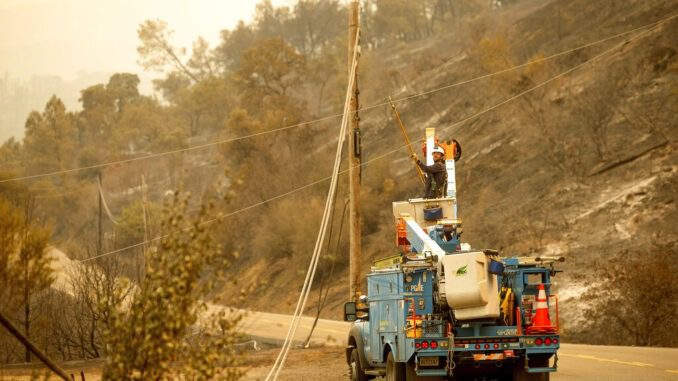
SACRAMENTO, Calif. — Poor planning coupled with extreme weather caused rolling blackouts that affected hundreds of thousands of people during an August heat wave, energy regulators said Tuesday.
A 121-page preliminary analysis concluded that the state wasn’t prepared to deal with a “heat storm” that sent temperatures soaring into triple digits on Aug. 14 and Aug. 15 which were, respectively, the third-hottest and the hottest August days in 35 years.
The state’s power grid ordered utilities to cut electricity to customers on a rotating basis for around an hour at a time, affecting more than 800,000 homes and businesses over two days. It was the first such order since 2001.
Gov. Gavin Newsom demanded an investigation after the outages.
“These blackouts, which occurred without prior warning or enough time for preparation, are unacceptable and unbefitting of the nation’s largest and most innovative state,” Newsom wrote in a letter to California’s three major energy agencies.
In its response, the agencies said there wasn’t an single root cause of the outages but rather a series of contributing factors.
California, which has increased its reliance on solar power as it moves towards total reliance on renewable energy, didn’t properly plan for more supplies to cover evening hours when air conditioning demand remained high but solar power production began to fall, according to the study.
In addition, the heat wave blanketed the West, making it harder to import extra electricity from other states, the report said.
“Also due to the effects of heat and drought over time, the availability of hydroelectric power in California in 2020 was below normal. In addition, high clouds from a storm were covering parts of California during the same period, reducing available generation from all types of solar generation facilities,” the report said.
Some issues in the energy market also contributed to supply challenges, such as failing to schedule enough energy ahead of time, the report said.
“The combination of these factors was an extraordinary event,” said a letter to Newsom included in the report. “But it is our responsibility and intent to plan for such events, which are becoming increasingly common in a world rapidly being impacted by climate change.”
It recommended updating planning to account for extreme events and work to move forward with projects that can help provide resources by next year.
The report was prepared by the Public Utilities Commission, the Energy Commission and the California Independent System Operator, which manages the state’s power grid. A final analysis is expected to be completed by the end of the year.
“We will absolutely adjust our planning, procurement, and market policies to meet these changing circumstances and ensure our energy future is clean, reliable, and affordable for all Californians,” PUC President Marybel Batjer said in a statement.


